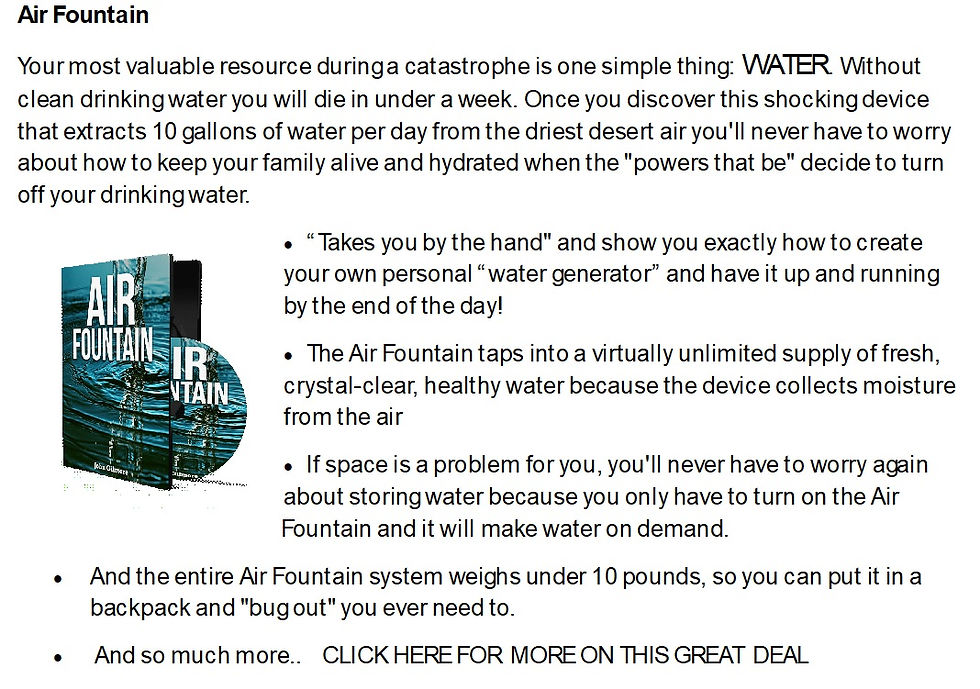Survival and preparedness are sometimes pigeonholed into the realm of "kooks" and "crackpots", but that couldn't be further from the truth. In the bustling metropolises of today's world, urban survival skills have become increasingly essential. Whether facing natural disasters, civil unrest, or unforeseen emergencies, being prepared to navigate urban environments is crucial for safeguarding oneself and loved ones. In this article, we'll identify six key components of urban survival: shelter, food, water, security, first aid, and navigation. It is impossible to do a deep dive into each of these subjects in a brief article like this. This is intended to get you to consider what you will need in the event of such an emergency.
Shelter: In urban settings, shelter can range from finding refuge in abandoned buildings to constructing makeshift structures. During emergencies, identifying safe shelters such as community centers, schools, or designated evacuation zones is paramount. Become familiar with these BEFORE you need them! Additionally, understanding how to fortify temporary shelters against weather elements and potential threats is essential for survival.
Food: Urban environments may initially seem devoid of natural food sources, but with resourcefulness and knowledge, sustenance can be found. Foraging for edible plants in parks, scavenging non-perishable food items from abandoned stores, and even fishing in
urban waterways are potential strategies. However, caution must be exercised to avoid contaminated or spoiled food, which could exacerbate survival challenges. FEMA recommends that you have an emergency food supply (as well as water and necessary medicines) set aside to last each person in your family, two weeks. Take into consideration special dietary needs for the elderly, diabetics, babies, etc. Non-perishable food supplies such as “MREs” (Meals – Ready to eat) are available everywhere. FEMA and the American Red Cross also have a handy little guide at: f&web.pdf (fema.gov).
Water: Access to clean water is critical for urban survival. (Assume about a gallon per person, per day – More in hot climates). While urban areas often have water infrastructure in place, disruptions can occur during emergencies. Knowing where to find alternative water
sources such as rivers, lakes, or even rainwater collection points is essential. Purification methods, including boiling, chemical treatments, or portable filters, should be employed to ensure water safety.
Security: Urban environments pose unique security challenges, particularly during times of crisis. Maintaining situational awareness and avoiding high-risk areas are key strategies for personal safety. Additionally, securing shelters against intruders and fortifying defenses, if necessary, can provide added protection. Collaborating with trusted individuals and forming alliances within communities can also enhance security measures.
First Aid: Injuries and medical emergencies are common in survival situations, making first aid knowledge indispensable. Basic first aid skills such as wound care, CPR, and treating fractures can save lives. Carrying a well-equipped first aid kit containing essential supplies is
essential for addressing injuries promptly and effectively. Additionally, knowing how to recognize and respond to medical emergencies specific to urban environments, such as chemical exposures or trauma from collapsed structures, is crucial. At the time of an emergency, it is far more practical to already have a well-practiced familiarity with first aid skills than to have to consult a first aid manual (IF you have one with you). First aid and CPR courses are readily available, are usually reasonably priced, can be fun, and will give you confidence when such skills are needed.
Navigation: Navigating urban landscapes, especially during emergencies when traditional infrastructure may be disrupted, requires adaptability and resourcefulness. Familiarizing oneself with local landmarks, street layouts, and alternative routes can aid in navigation. Utilizing maps, compasses, or GPS devices, if available, can provide valuable guidance. In the absence of technology, relying on natural navigation cues like the sun's position or prominent landmarks becomes essential. Remember, depending on the type of emergency, GPS systems may become inoperative. Even areas you know well, can look very foreign and confusing during a disaster.
In conclusion, urban survival demands a multifaceted approach encompassing shelter, food, water, security, first aid, and navigation. By equipping oneself with the necessary skills, resources, and mindset, individuals can effectively navigate and overcome the challenges posed by urban emergencies. Preparation, resilience, and community cooperation are the cornerstones of urban survival, ensuring the safety and well-being of all inhabitants in times of crisis. Many experts agree that a positive survival mindset is absolutely critical.





コメント